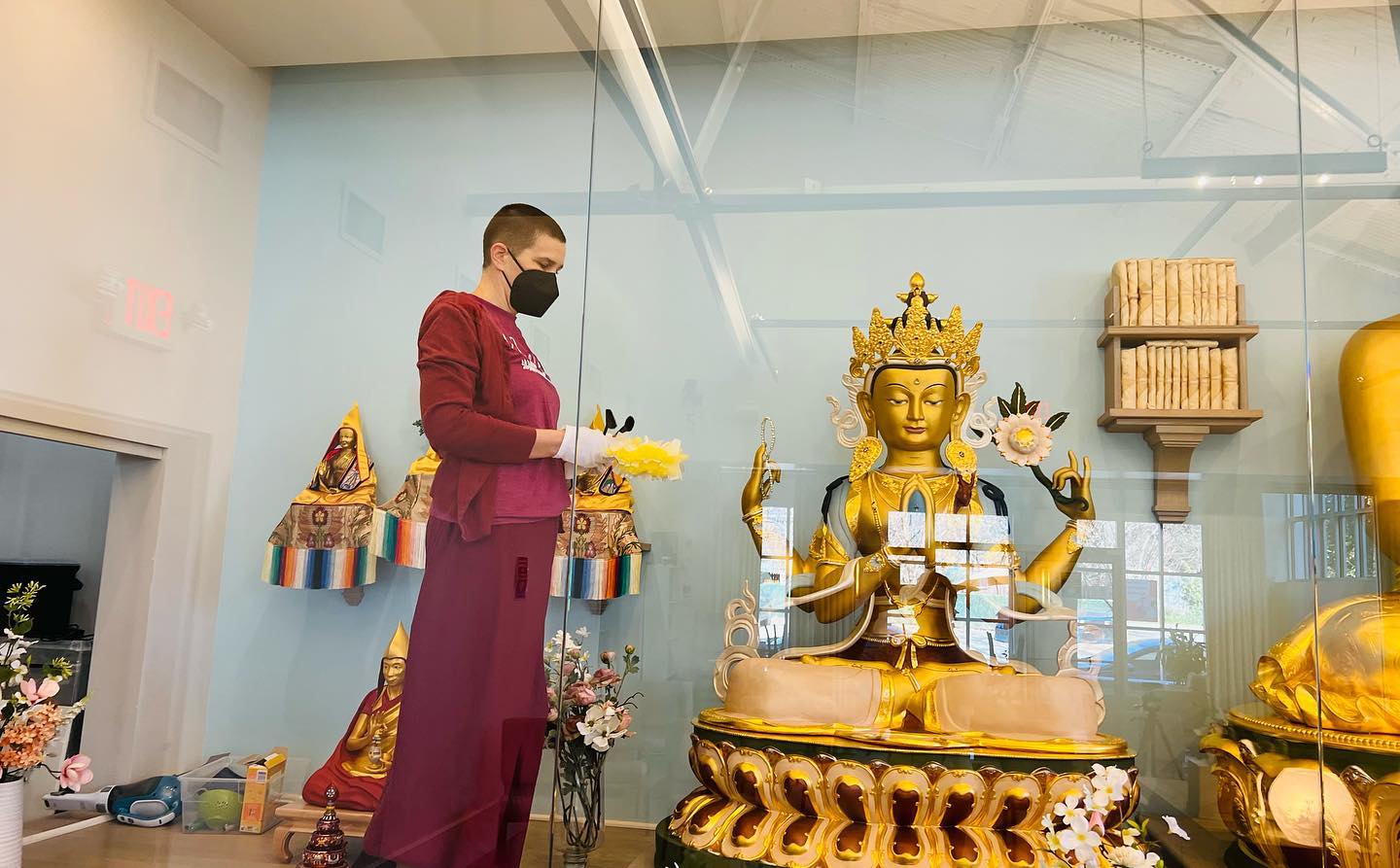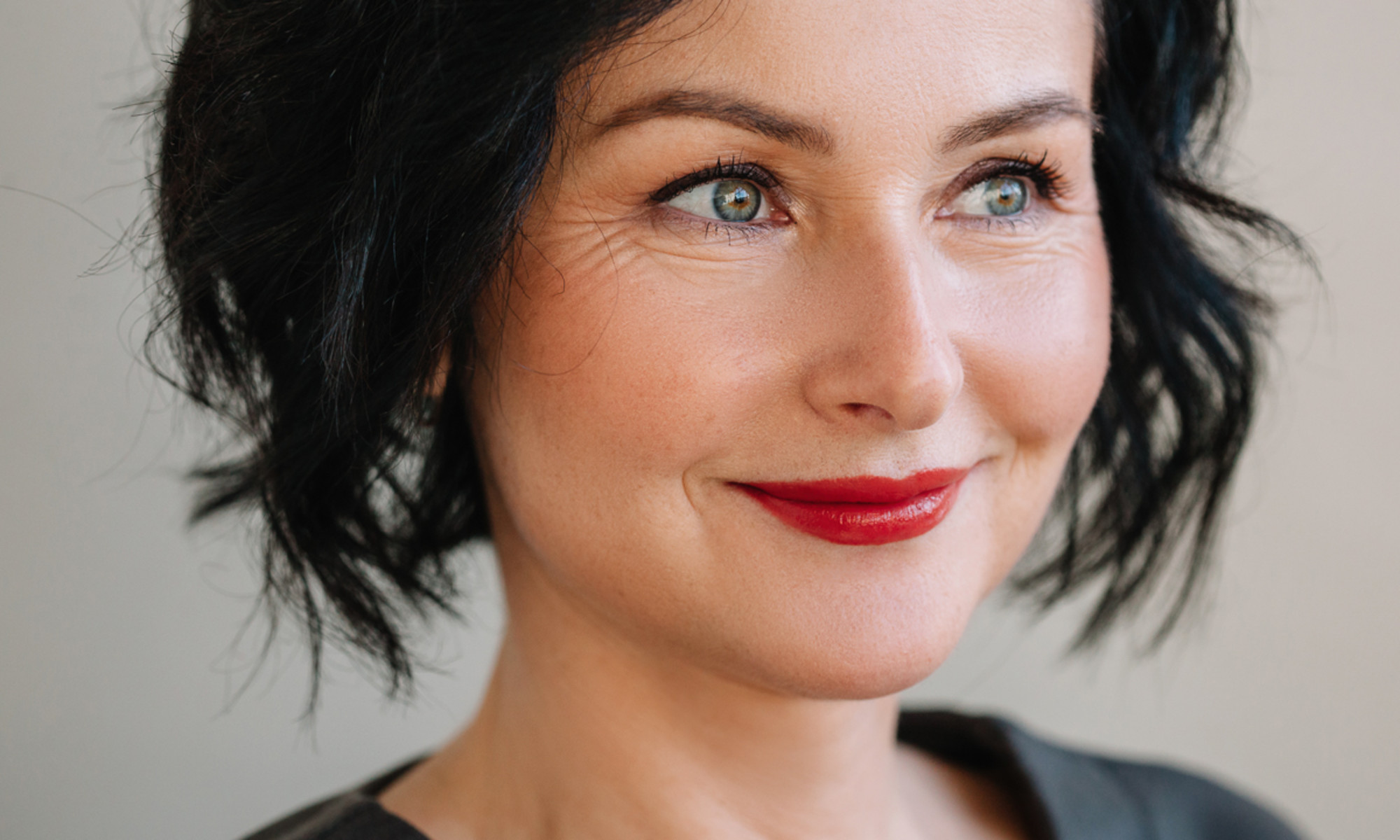Why Am I So Clingy? The Psychology Behind It + 6 Steps To Heal, From Therapists
"Clinginess" is actually rooted in attachment issues.


Contributing Sex & Relationships Editor
Contributing Sex & Relationships Editor
Kelly Gonsalves is a sex educator, relationship coach, and journalist. She received her journalism degree from Northwestern University, and her writings on sex, relationships, identity, and wellness have appeared at The Cut, Vice, Teen Vogue, Cosmopolitan, and elsewhere.
Image by Rob And Julia Campbell / Stocksy September 05, 2024 We carefully vet all products and services featured on mindbodygreen using our Our selections are never influenced by the commissions earned from our links. If there's anything worse than being called "clingy," it's the nauseating feeling of actually being clingy: the constant anxiety about what your partner thinks about you, the over-analyzing every little thing they do or say, and the underlying fear that you'll never be truly loved. If any of this rings a bell for you, know that you're already moving in the right direction. Self-awareness is the first step to healing. Ahead, we've gathered therapists' advice on how to heal from so-called clinginess and how to become more secure in your relationships.
What does it mean to be clingy?
"Being clingy" is a colloquial way to describe an anxious attachment style, which is a pattern of behavior in relationships wherein a person is constantly anxious about being rejected, abandoned, or otherwise not having their needs for intimacy and closeness met, and so they engage in frenzied and sometimes controlling behaviors meant to keep their partner from leaving them.
However, these "clingy" behaviors often tend to do the very opposite, alienating and ultimately pushing away the very person who the "clingy" partner is desperate to keep close.
"Clingy behavior comes from a person's desire to fulfill their unmet needs, whether it be emotional, physical, spiritual, or mental," couples' therapist Beverley Andre, LMFT, recently told mbg. "The person is experiencing fear and anxiety that is attached to a belief they won't get their needs met, so they cling even harder to a person or situation to prevent the risk of this happening."
Examples of "clingy" behavior in a relationship:
What causes a person to be "clingy"?
Past experiences with family, ex-partners, and even friends can all cause a person to develop clingy tendencies, according to licensed therapist Grace Suh, LMHC, LPC. The anxious behavior is rooted in trust issues, i.e., having trouble trusting other people to come through for you, as well as potentially abandonment issues, wherein past experiences with abandonment have caused an ongoing fear that future relationships will end the same way.
At core, "clingy" behavior is tied to underlying attachment issues, in particular having an anxious attachment style. "Attachment develops in infancy between parent and child. How a parent responds to their child impacts attachment style," couples' therapist Aparna Sagaram, LMFT, recently told mbg. "If a child is unsure how a parent will react or the parent is inconsistent with responses, the child is likely going to develop an anxious attachment. Your attachment style to caregivers is most likely the same attachment style you will develop with a romantic partner."
How to stop being clingy
1.
Understand the root of your issues.
The first step to stopping clingy behavior is understanding where it came from. That will usually mean "recognizing your own past; recognizing any form of abandonment issues from family, friends, and significant others; and processing through how it has affected you in relationships," says Suh. "This work can often be processed during therapy."
2.
Learn about your attachment style.
"Understand your attachment style," Suh recommends. "Read and learn about it. And analyze how you can work on the issue accordingly."
According to attachment theory, all of us have one of four attachment styles: secure, anxious, avoidant, and fearful-avoidant.
Clingy behavior is most associated with the anxious attachment style, so it's important to really learn about the science of attachment and how your attachment style might be affecting you. The goal is to eventually move toward a secure attachment style.
We've got a roundup of the best attachment books to help you start your learning, but it's also often helpful to work through attachment wounds with a therapist.
3.
Talk to your partner about the behavior.
"Ask them how they are understanding and experiencing your behavior," Andre recommends. "Partners are able to provide invaluable observations to a problem that you may not be able to see."
If you tend to be clingy, your partner is probably aware and has some thoughts about it. While it can be nerve-wracking to openly discuss this vulnerability of yours, these conversations will help you both understand each other better and hopefully help you both communicate more clearly about your needs.
"Healing looks like getting clear on your needs. It also looks like allowing people in and taking small risks to trust they will show up for you," says Sagaram. "It also helps to state to your partner that you are worried about the reaction if you express a need. Vulnerability goes a long way in relationships and has the potential to heal anxious attachments. The right person will want to make you feel emotionally safe in a relationship."
4.
Set and respect boundaries.
Your conversation with your partner will likely give you some insights into what behaviors of yours make them feel uncomfortable or unseen, and it's important to honor those boundaries, says Suh.
When respecting your partner's boundaries also makes them feel more understood and comfortable in the relationship—which can ultimately help strengthen the relationship.
Suh even recommends trying to create your own boundaries in the relationship that help facilitate your healing. For example, she says you might consider mutually agreeing to limit the frequency of your texting and calling.
By directly setting up this understanding between you, it can help you to alleviate any anxiety about not receiving texts constantly throughout the day—because you've both agreed not to do that already.
5.
Learn how to self-soothe.
Since clingy behavior is most often prompted by anxiety, it's important to learn how to self-soothe and manage your anxiety on your own. "It's OK to need reassurance from others, but learn to give yourself reassurance too," says Sagaram.
While you should always be able to talk to your partner about how you're feeling, it's also important to recognize that it's not your partner's responsibility to manage your feelings of insecurity.
This is something you'll need to figure out how to do on your own. What are some healthy ways you can cope with feelings of anxiousness around your relationship—and, over time, reduce them?
6.
Have your own full life separate from your partner.
Lastly and perhaps most importantly, build your self-confidence and work on feeling whole outside of your relationship. When you feel fulfilled and satisfied in your life overall, you'll feel less anxious about the status of your relationship—because you'll know that ultimately, if things don't work out, you're going to be just fine.
"Live your life!" says Suh. "Meet and make new friends, develop new interests, learn a new hobby, or get involved in productive social gatherings." Fill your life with love so you're not dependent on one relationship to sustain you.
If your partner is clingy
"It's absolutely not your responsibility to fix the person to not be needy," says Suh.
That said, there are ways for you to support your partner's healing journey by going the extra mile to help them feel secure in the relationship, she says, such as by expressing to your partner often that you do love and cherish them, planning and having purposeful quality time, and making sure to consistently be honest and follow through on promises.
At the same time, Suh also recommends setting healthy boundaries in the relationship to make sure they're not saddling you with too much responsibility for their sense of wholeness. "Communicate any feelings about clingy behaviors in 'I' messages without any blame," she recommends. "Talk in clear language [about] what is acceptable and is not tolerated."
"Clinginess" can sometimes become possessive if the behavior becomes excessive, habitual, and unrecognized, says Suh, adding that a possessive person can sometimes start to disrespect and even dehumanize their partner. "The best way to keep in check is to be very honest to yourself and accept that there may be an issue," she says.
If it feels like you two are struggling to navigate these challenges on your own, don't be afraid to reach out to a professional to get support, says Suh. Individual or couples' therapy can help you both communicate better about your needs and boundaries and help your partner work through the attachment issues they may be dealing with.
FAQ
Is being clingy a red flag?
What counts as a red flag to one person may not be a red flag to everyone, but generally speaking, "clingy" behavior signals that a person has underlying insecurities and trust issues that will ultimately need to be addressed and healed before they can be in a truly healthy relationship.
Is being clingy toxic?
Toxic behavior is simply any behavior that negatively impacts the person doing it or the people around them, and in that sense, yes, being clingy is toxic because it usually feels bad for both people involved. That doesn’t mean the clingy person is a bad person over; it just means their current behavior is harmful and needs to be addressed.
Am I clingy, or is he distant?
Both things can be true at the same time. You can be someone who is prone to insecurity and anxiousness in relationships while also being in a relationship with someone who is distant. But to gut check which is present in your current situation (or if it's a little bit of both), it helps to double-check with your friends and potentially a professional to get a third-party opinion. Suh also recommends trying to objectively identify if there are any clear examples of emotional or physical absence from your partner, in addition to looking inward for any underlying trust or abandonment issues.
The takeaway
Clingy behavior can't coexist with a healthy relationship because it's rooted in underlying insecurities, trust issues, and attachment wounds from the past. But the good news is that these issues can be healed with attention, patience, and inner work.

 Kass
Kass 
































![Best Digital Agency Showreel Videos in 2025 [with 9 Creative Examples]](https://digitalagencynetwork.com/wp-content/uploads/2020/11/best-digital-agency-showreel-videos.jpg)